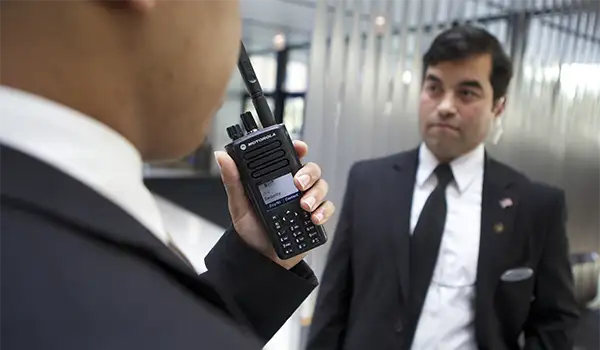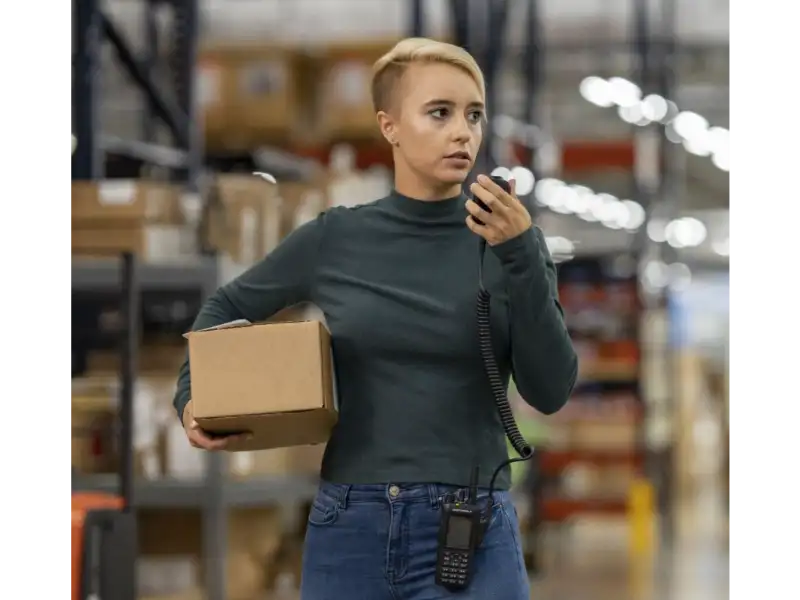Walk into almost any busy warehouse, hotel, or firehouse and you’ll notice something. Workers might carry smartphones in their pockets, but when it comes to quick communication, they reach for something else: two-way radio. It might surprise people who think of radios as outdated, but in industries where seconds matter, they still dominate.
The Enduring Legacy of Motorola Radios
It’s not an accident that Motorola radios became the standard. The company has been shaping two-way communication for nearly a century. They’ve built tools that changed not only business operations but history itself.
Back in 1939, Motorola rolled out one of the first car radios built for two-way communication. A year later, the Handie-Talkie was strapped onto soldiers heading to war.
In 1943 came the SCR-300, a 35-pound backpack radio that could cover 20 miles. By the 1990s, Motorola’s ASTRO system pushed radio into the digital era.
MOTOTRBO followed in 2007, bringing crisp digital audio and integrated data. And by 2008, APX radios gave first responders multi-band coverage, GPS, and secure voice in one rugged device.
That’s quite a timeline. What’s telling is that every milestone came from Motorola. When people think of a Motorola radio, they think of the company that never stopped raising the bar.
Why Businesses Still Rely on Motorola Two-Way Radios
Smartphones may dominate personal life, but businesses know better. Radios solve problems that phones often create.
Instant, Reliable Communication
Push-to-talk sounds simple. Press a button, and your message is out. But compare that to dialing, waiting for a signal, or hearing “call failed.”
Consider a supervisor on a factory floor trying to stop a machine because of a safety hazard. A delay of even ten seconds matters. Motorola two-way radios cut that delay down to almost nothing. And because they run on dedicated channels, they keep working when cell towers are overloaded.
Durability That Outlasts Smartphones
Have you ever dropped a phone on concrete? Most of us have, and usually it doesn’t end well. In rugged workplaces, failure rates for consumer phones climb up to 20%. Radios? Only around 4–8%.
On film sets, crews talk about finding Motorola radios buried in mud, switching them on, and hearing clear audio. That kind of resilience explains why production teams and utility workers swear by them. They’re built for abuse, not glass screens.
Battery Life for Long Shifts
Phones fade fast under heavy use. Nearly two-thirds (65%) of mobile workers admit their phones die before the end of a shift. That’s not just annoying; it’s a liability. Motorola radios run 8–24 hours on one charge, often longer.
A firefighter or security guard doesn’t have to wonder if their device will make it through the night. It just will. Nobody wants to sprint for an outlet mid-shift. Motorola portable radios save you from that headache.
Lower Cost of Ownership
Motorola mobile radios don’t come with monthly service bills for every unit. You buy them, and they work. No hidden costs or constant repairs. Fewer failures mean less downtime, and that translates into real savings. Multiply that across a 100-person team, and the financial difference is huge.

What Sets Motorola Radios Apart From the Rest
Plenty of companies sell radios. What makes Motorola two-way radios different is the attention to detail.
Audio Clarity and Noise Cancelling
Walk through a warehouse and you’ll hear forklifts backing up, machines humming, maybe even music leaking from someone’s earbuds. Try giving instructions over all that with a phone. It’s a gamble.
Motorola radios handle it differently. Their audio tech listens to the background and dials it down so voices stay clear. Instead of repeating yourself three times, you say it once and move on.
Security and Safety Features
People sometimes assume radio security is only for law enforcement. Hospitals, schools, and even hotels rely on encrypted channels to keep conversations private.
Many models go further with features like emergency buttons and GPS. If a worker feels unsafe, one press sends an alert and shares their location.
Versatile Options for Any Industry
Motorola builds radios for every level of need. The MOTOTRBO line caters to commercial clients who want Wi-Fi, Bluetooth, or slim designs.
The APX P25 series steps up for first responders with LTE and multi-band coverage. From a hotel front desk to a city fire department, there’s a Motorola radio designed for the job.
Future-Proof Technology in Motorola Radios
One reason Motorola radios haven’t been replaced is that they keep evolving. They don’t stand still while the rest of technology moves forward.
Digital and Cloud Integration
The MOTOTRBO line changed radios forever by bringing them into the digital era. Audio got sharper, and data became part of the package.
Now it goes even further. Companies can see which radios are online, check battery health, or pull usage reports right from the cloud. For managers, that means radios have become part of a bigger system that can be monitored, measured, and tuned just like any other IT tool.
Convergence With Smart Devices
Smartphones and laptops now connect to integrate with radio networks, too. A manager can hop on a channel from their laptop, while staff still carry radios. The result is flexibility. Teams keep the reliability of radios but gain the reach of digital tools.
Lighter, Smarter, More Ergonomic
Compare the 35-pound SCR-300 backpack from the 1940s to a handheld Motorola today weighing less than four ounces. Workers want to carry them. Slim, lightweight devices reduce fatigue and increase adoption. Radios feel like tools designed for real work, not fragile gadgets.
Why Motorola Radios Are Still the Gold Standard
There are endless ways to communicate these days. Apps, emails, phones, video calls, the list goes on. But when you strip it down to what really matters in the middle of a shift, the basics still win out.
You need:
- Instant access
- A battery that doesn’t quit
- Gear that can take a beating and still turn on
- A voice that cuts through without static
That’s what Motorola two-way radios give teams day after day.
At EMCI Wireless, we’ve watched these radios hold up in tough jobs, such as construction crews on Florida high-rises, firefighters during storms, and even hotel staff rushing during peak check-in. We don’t just hand out devices. We figure out which Motorola radios fit the way your team works. Contact us today and let’s set your business up with the Motorola radio system that will keep you connected when it counts.

